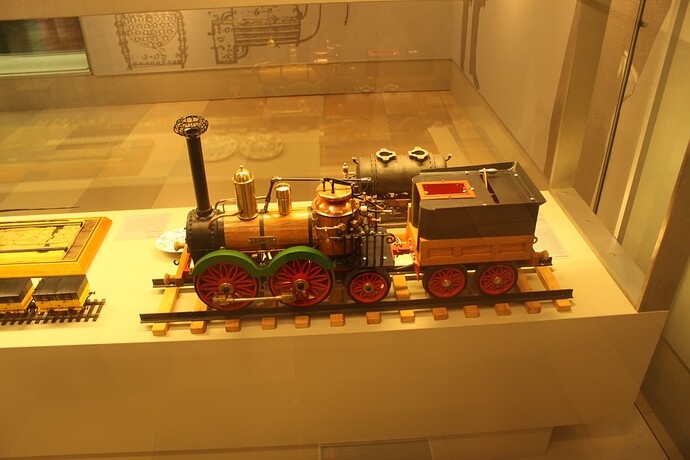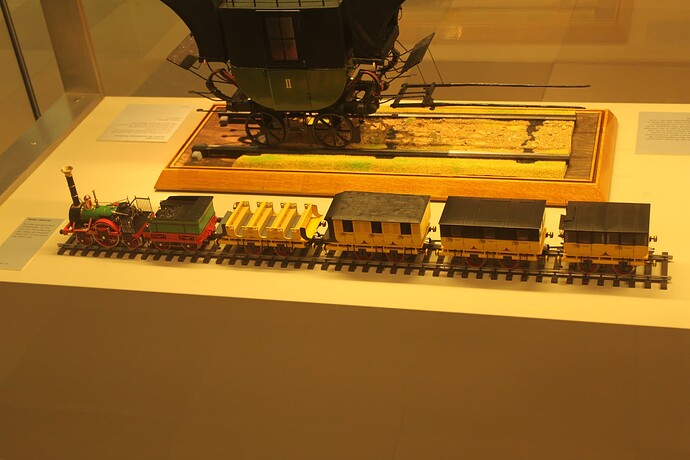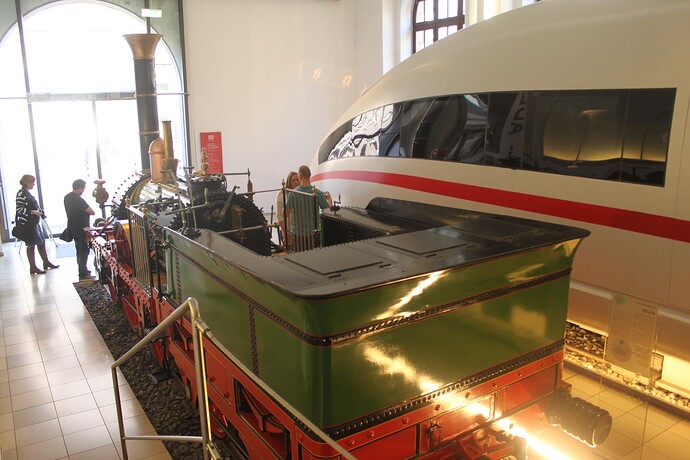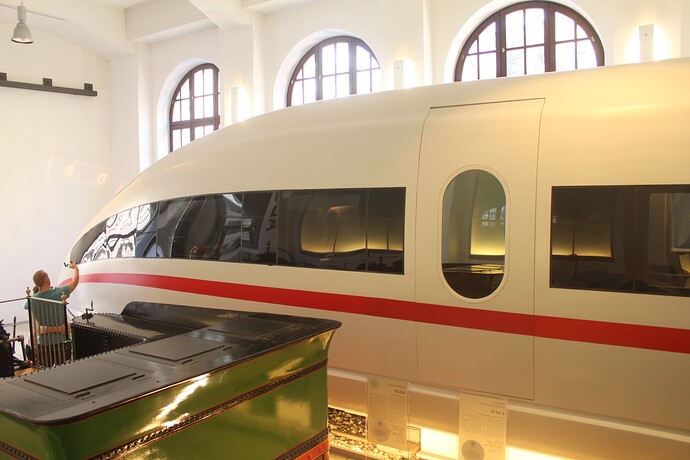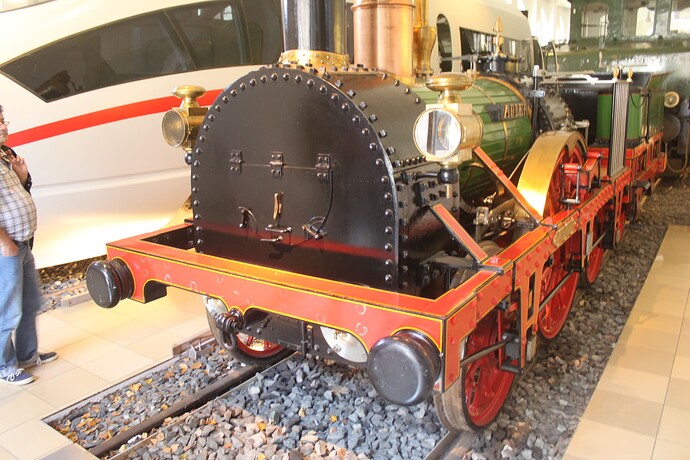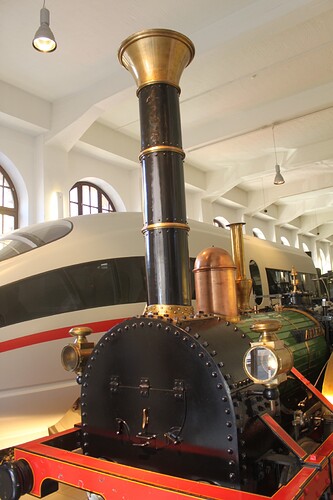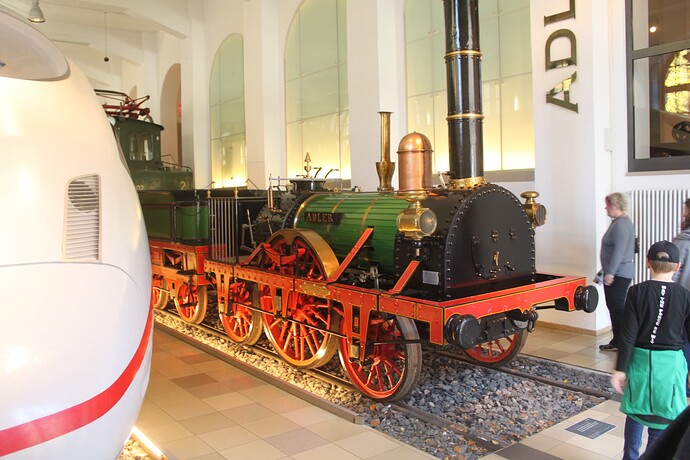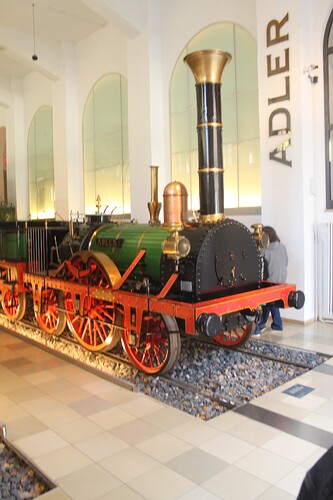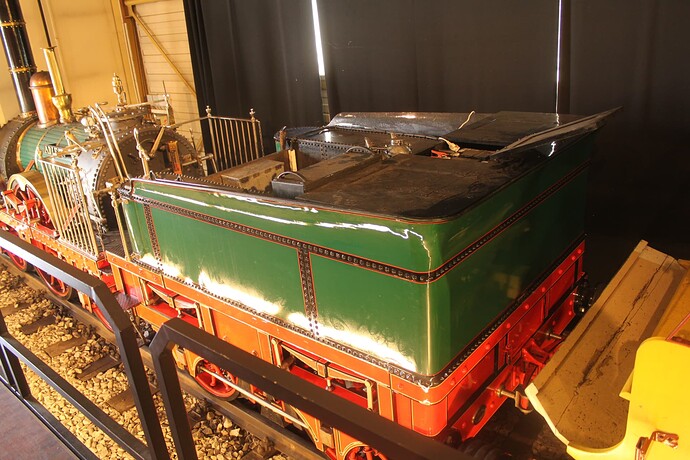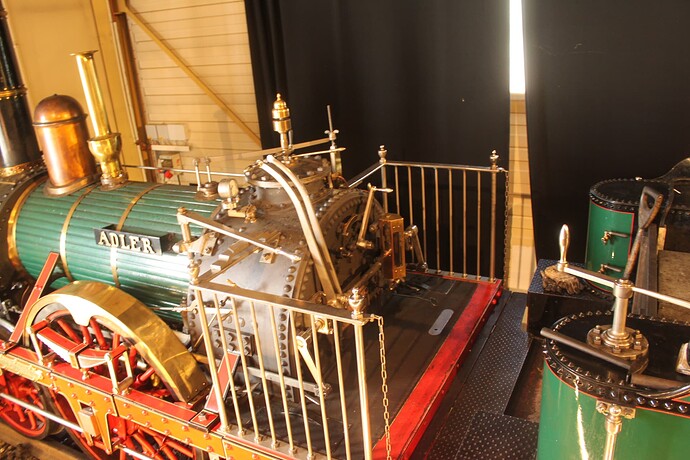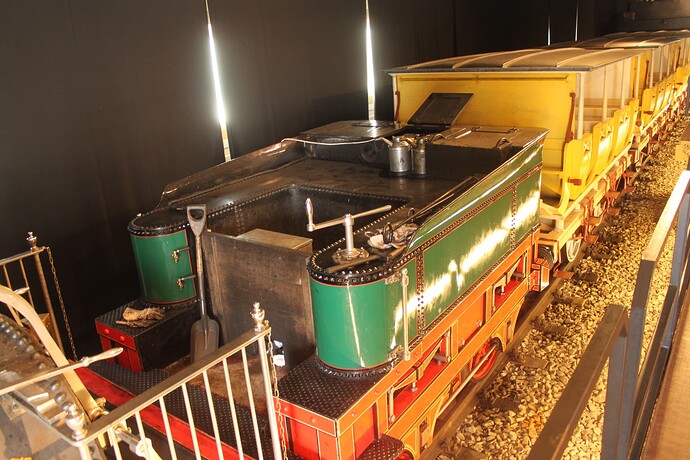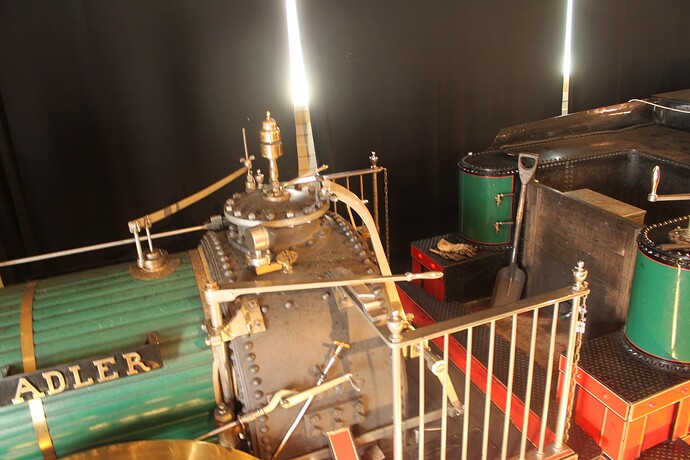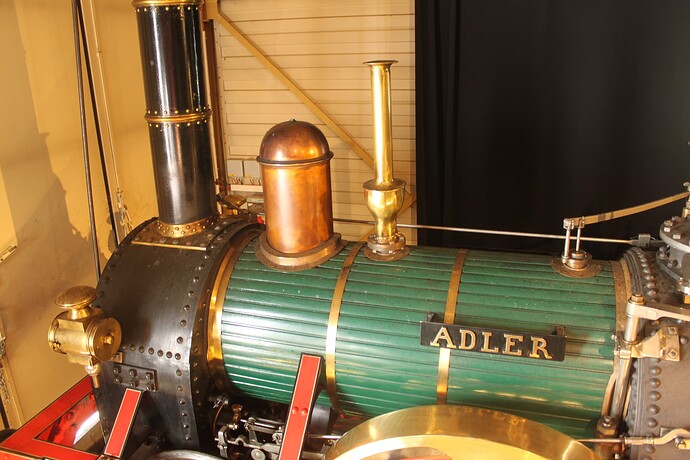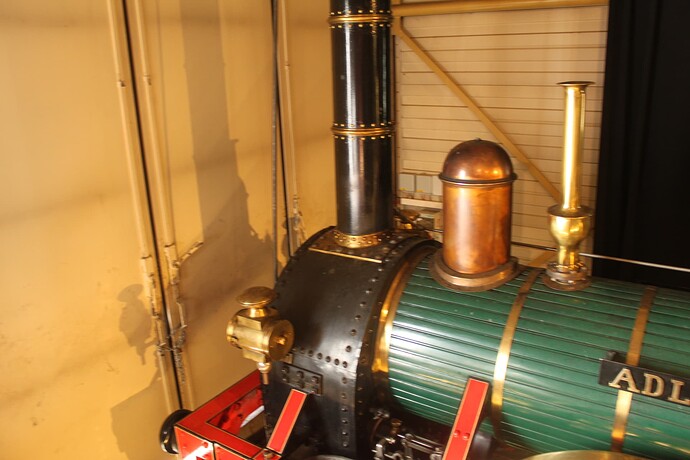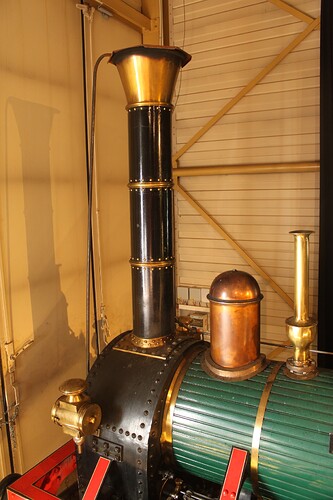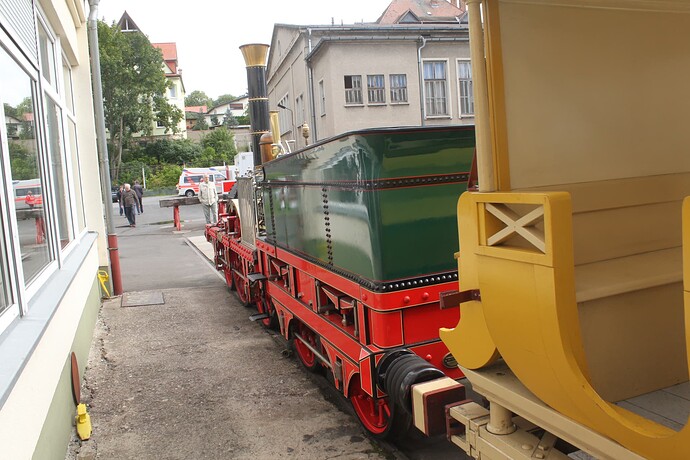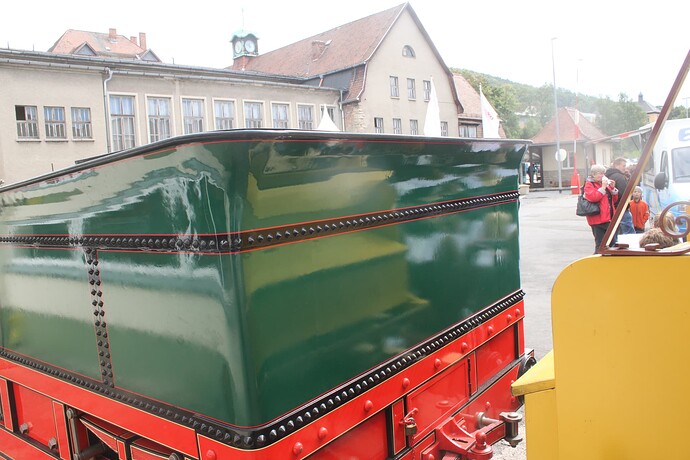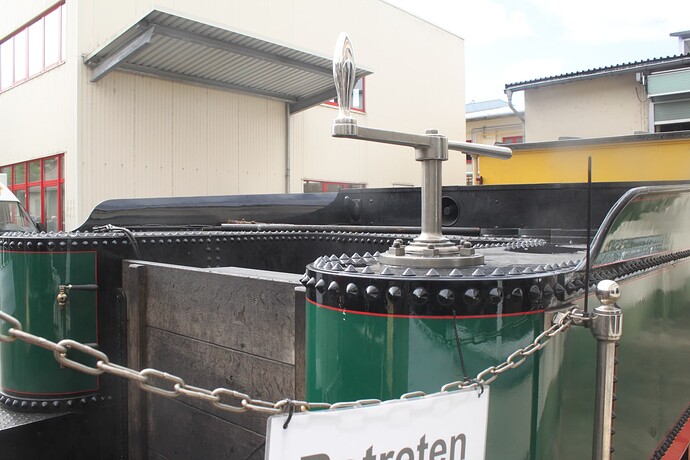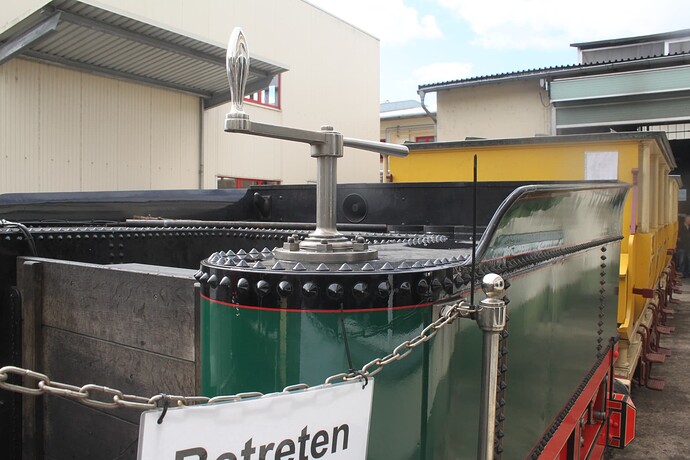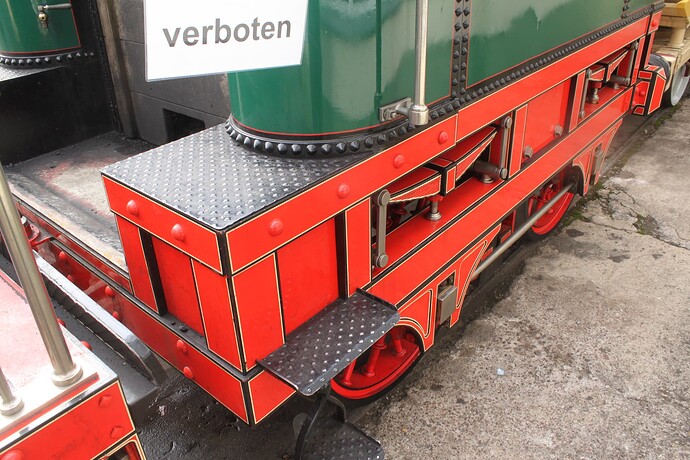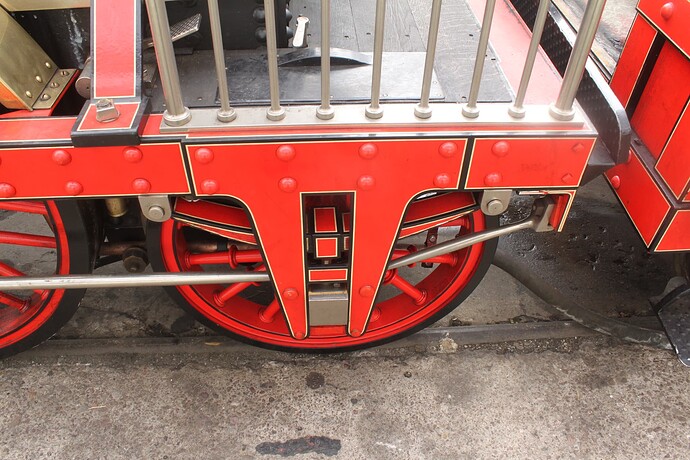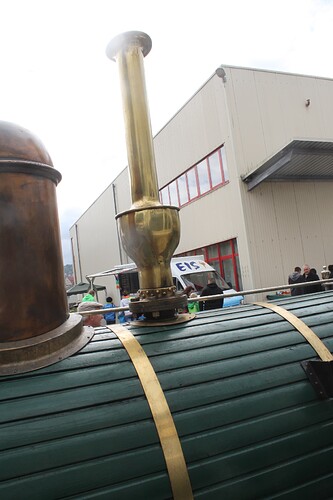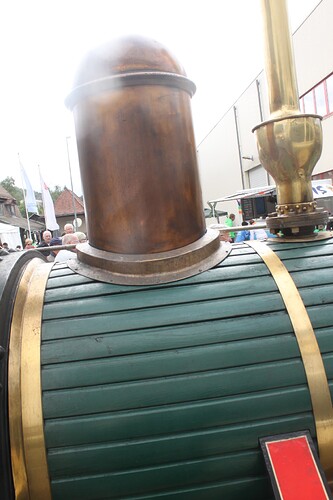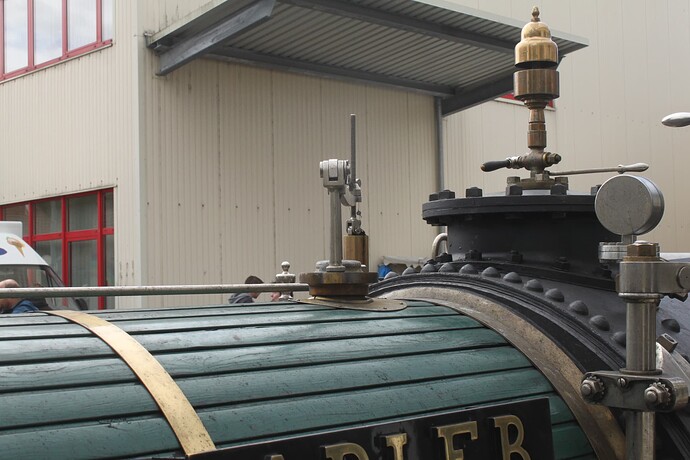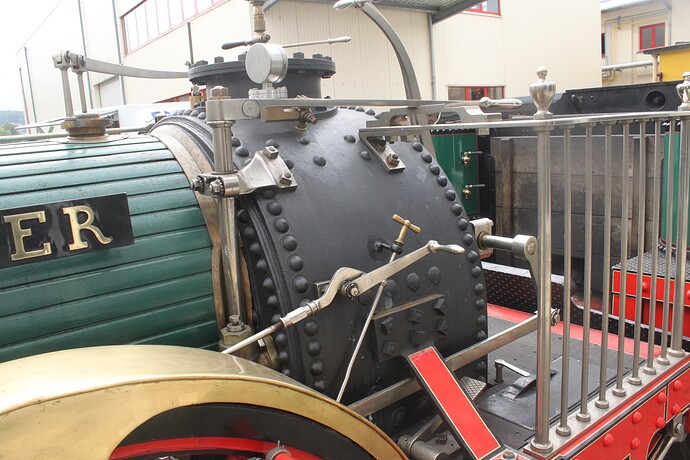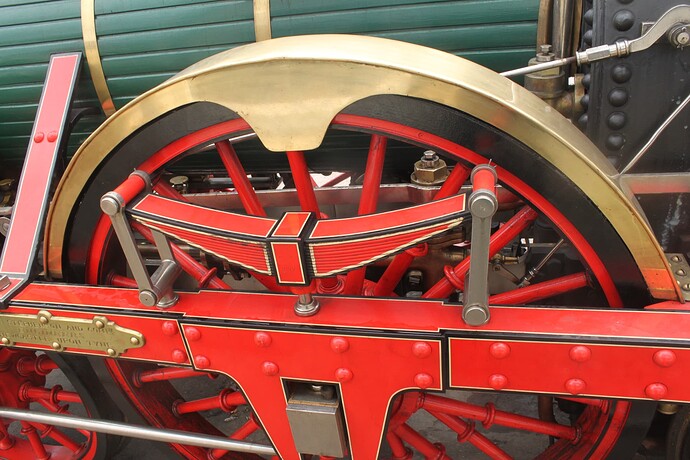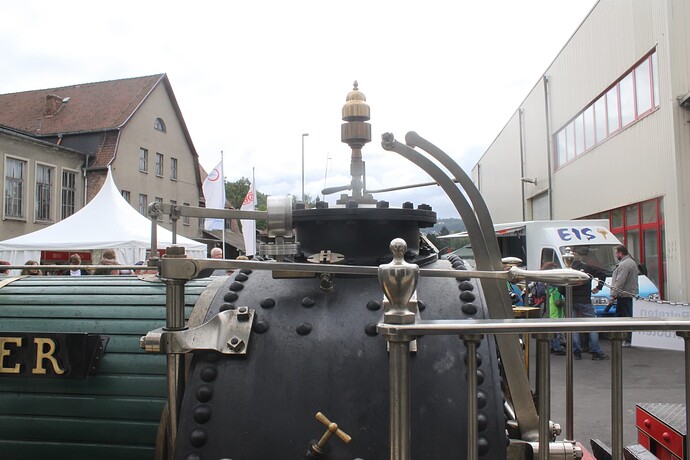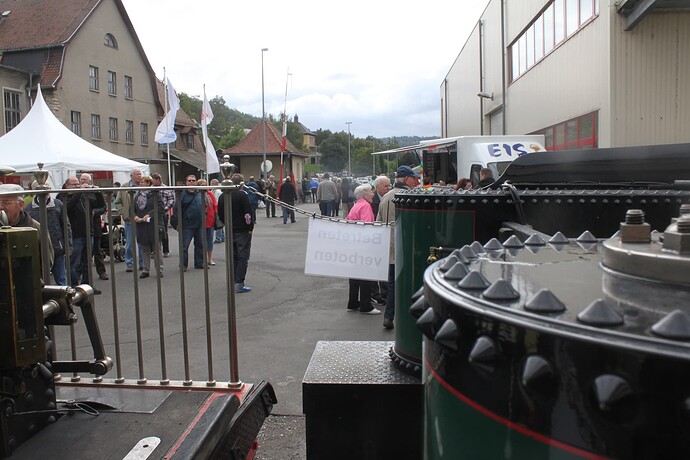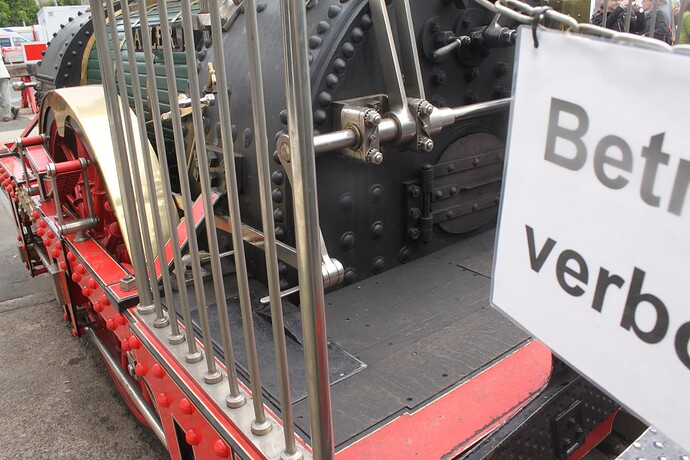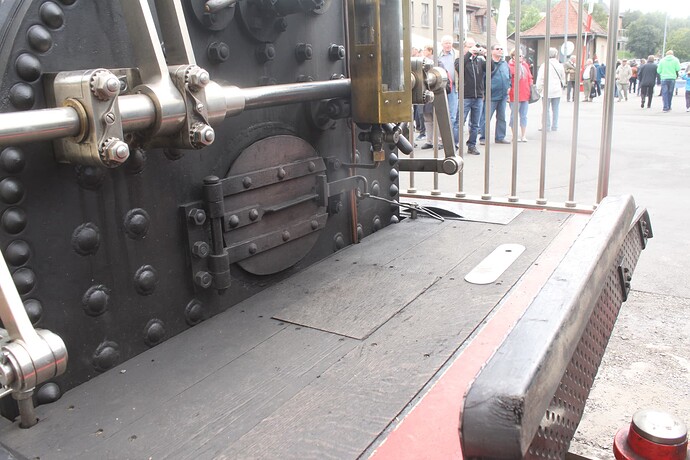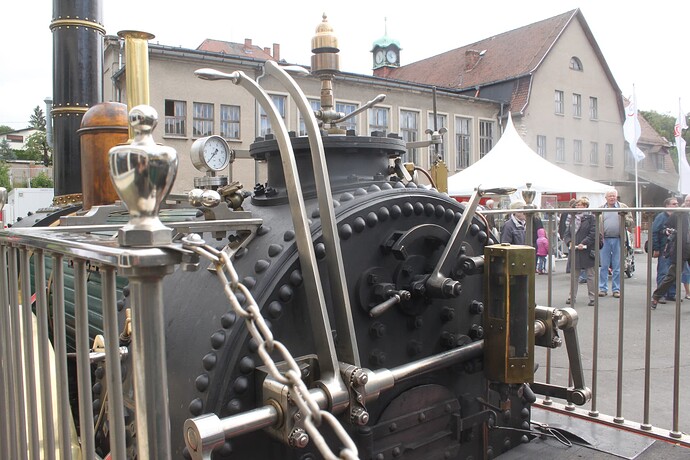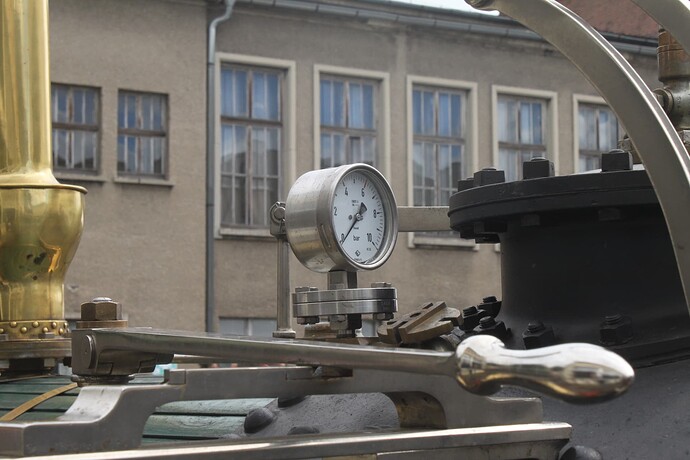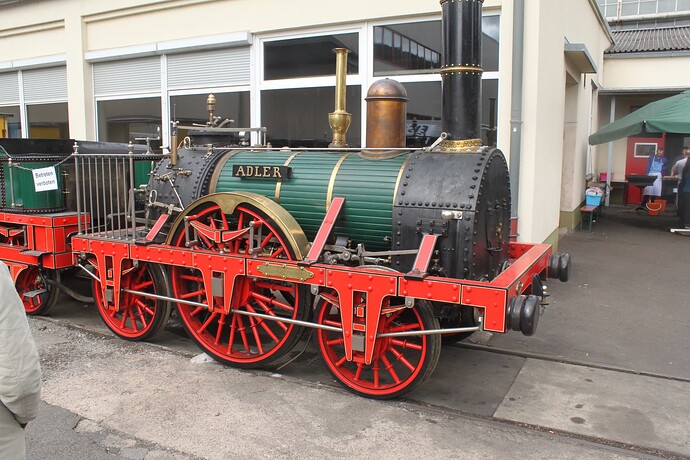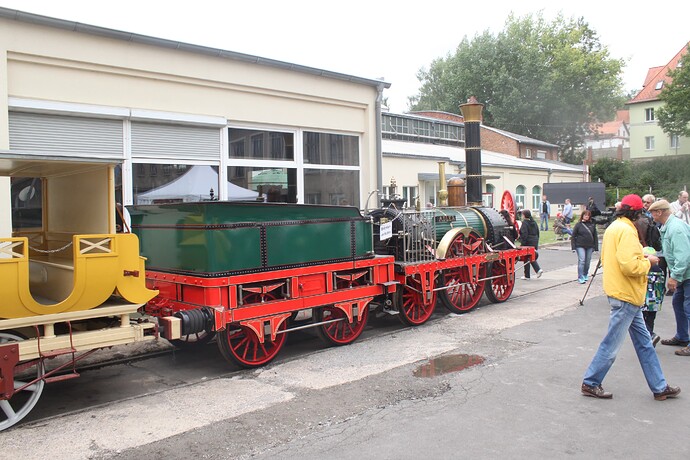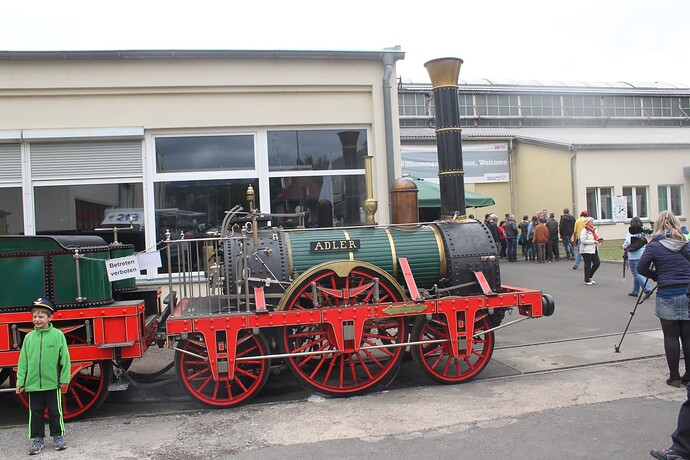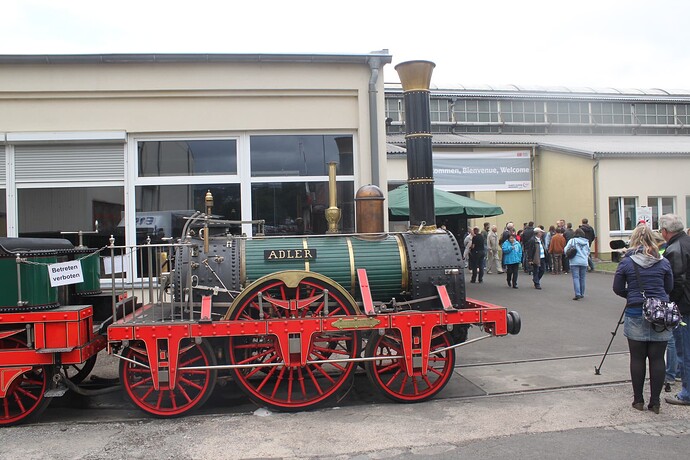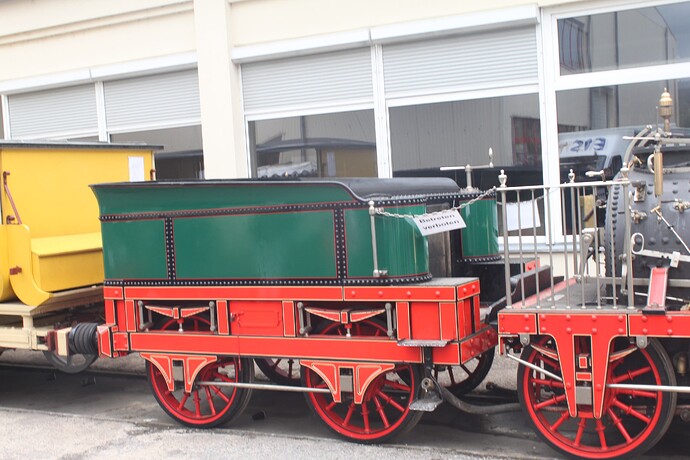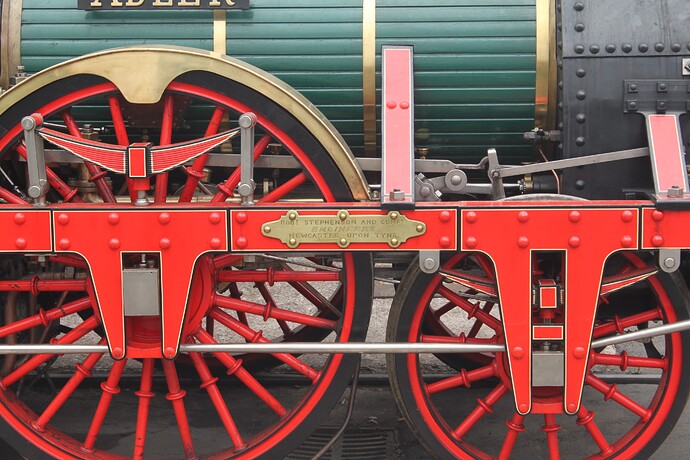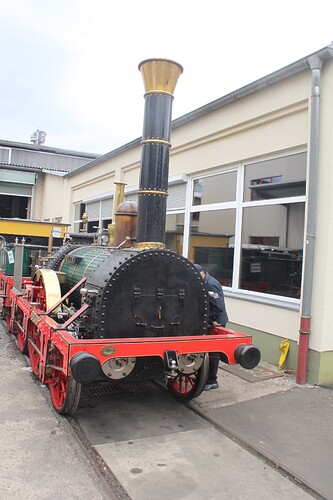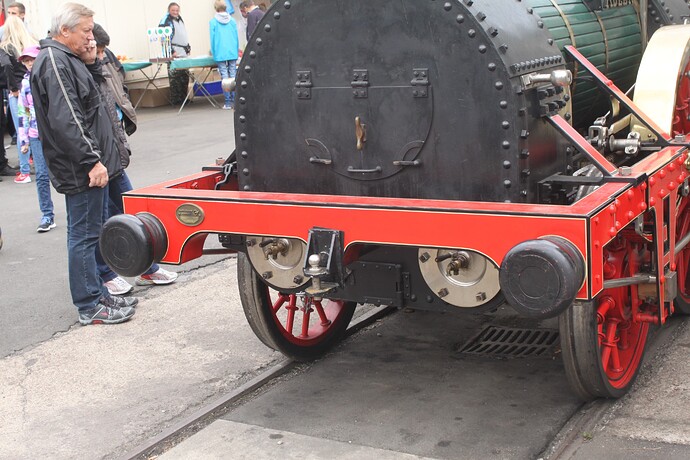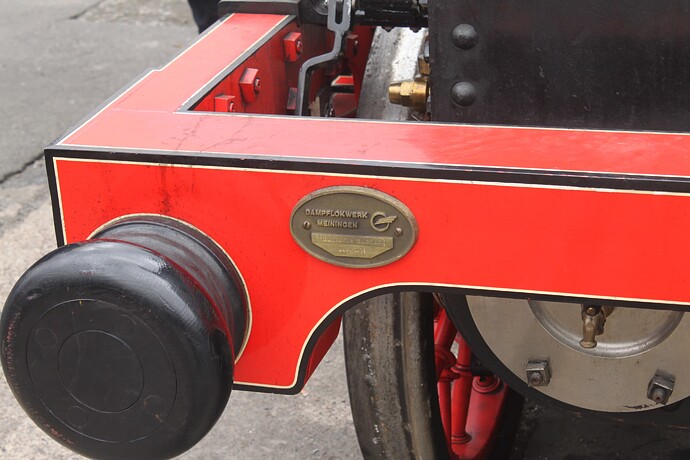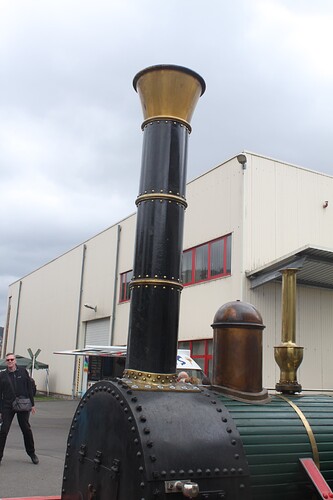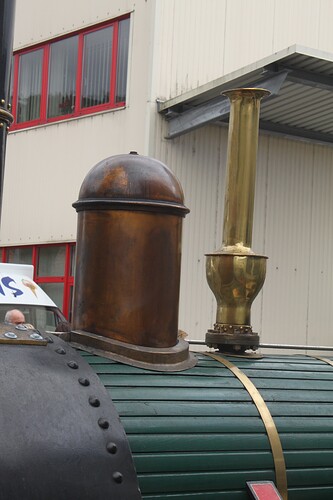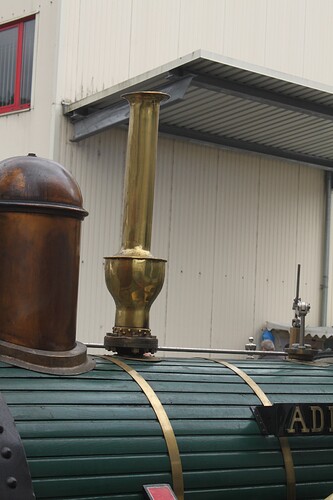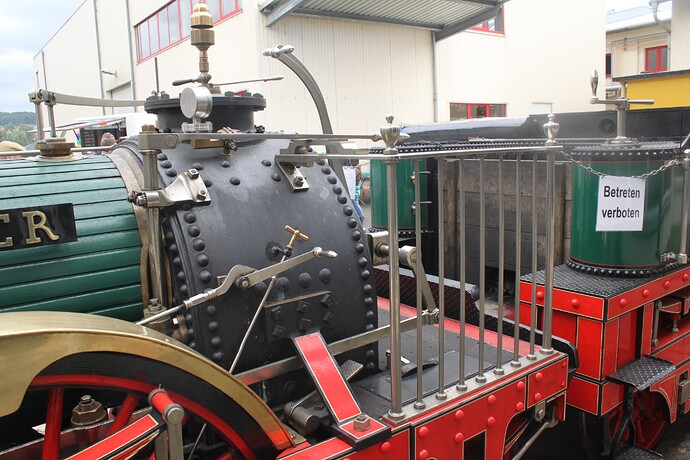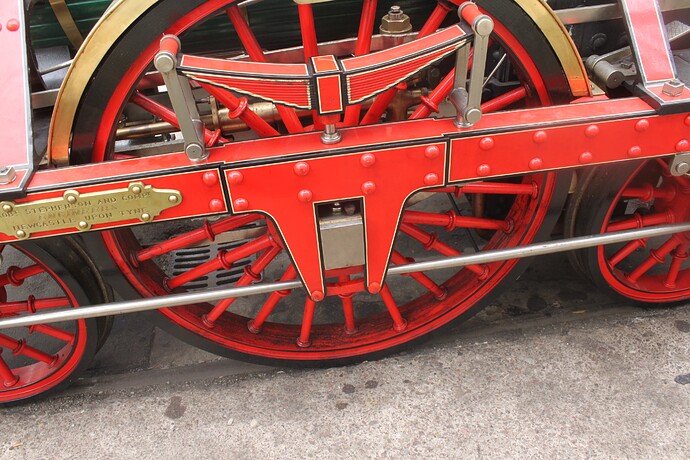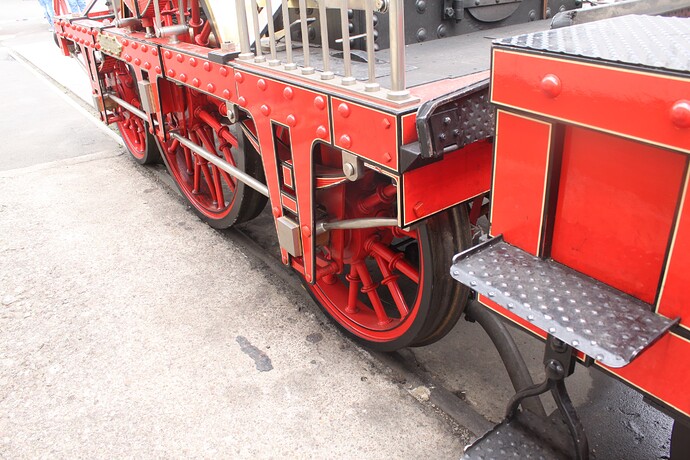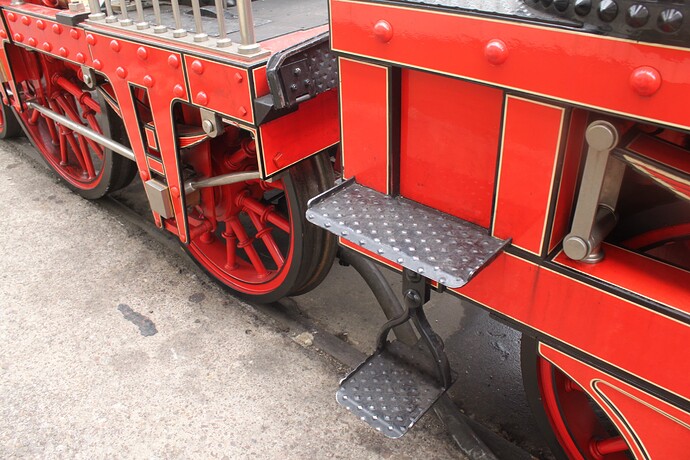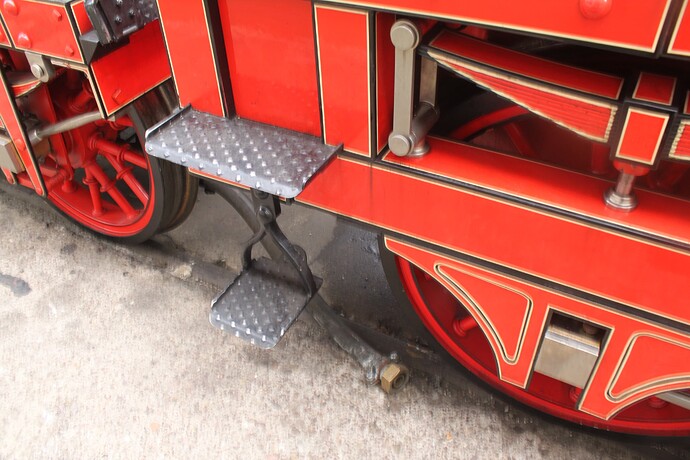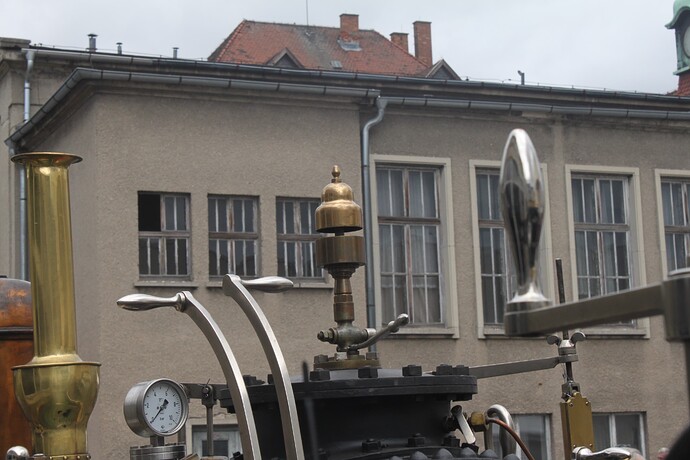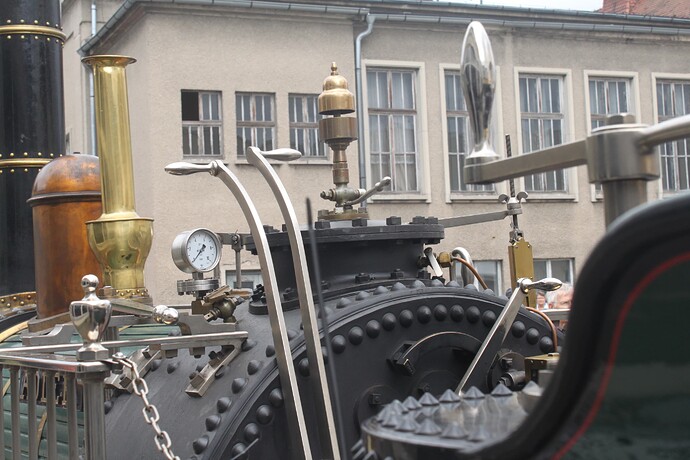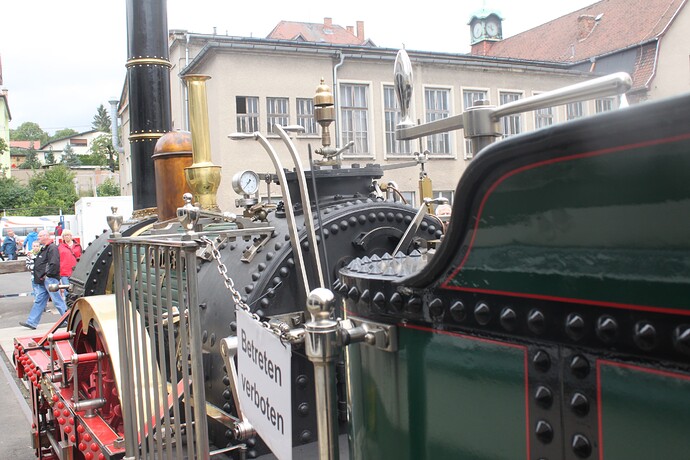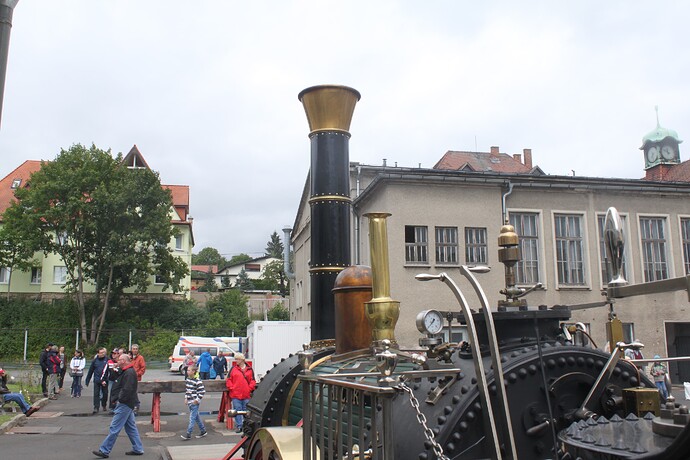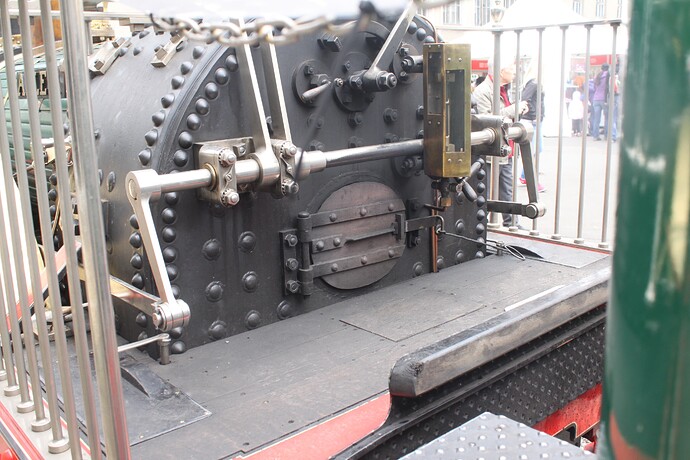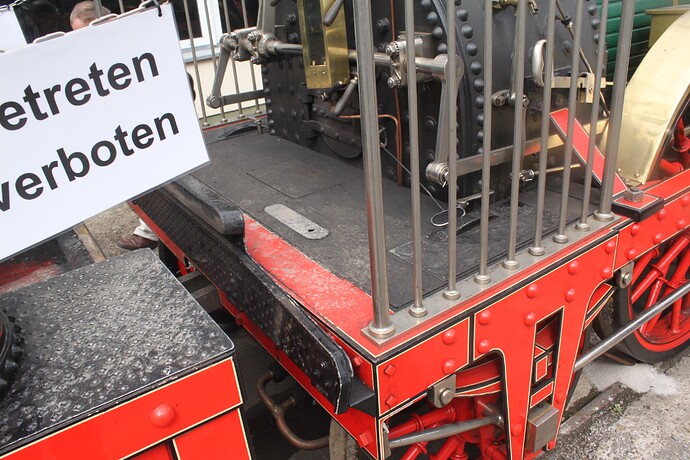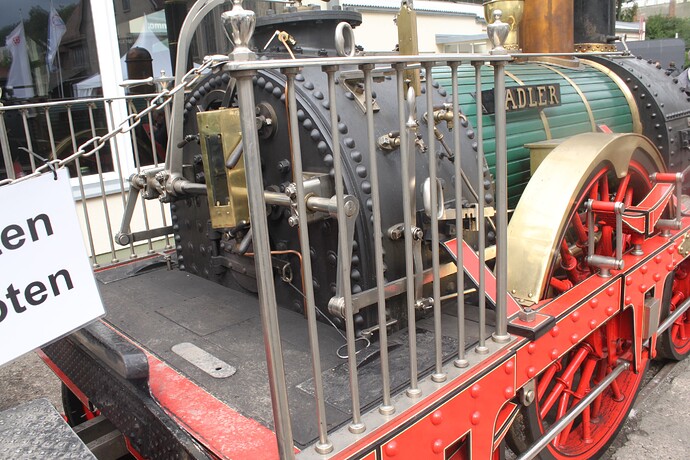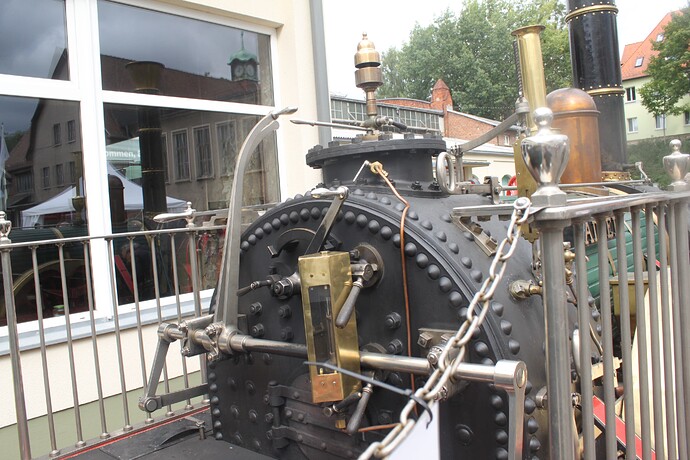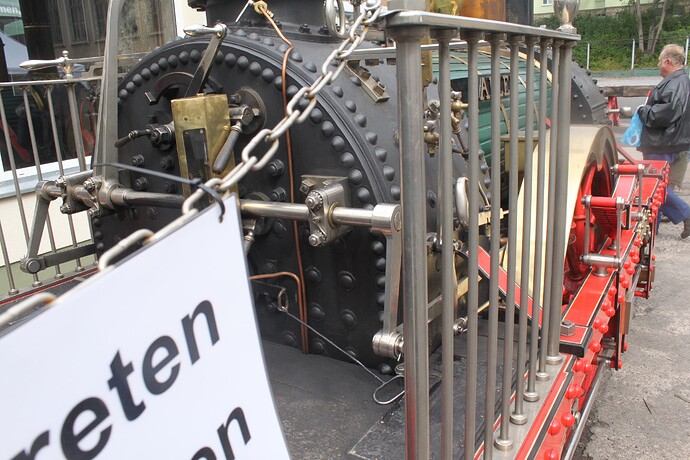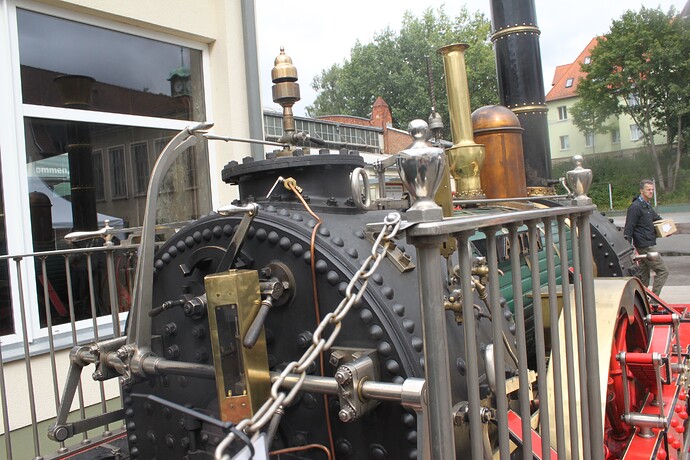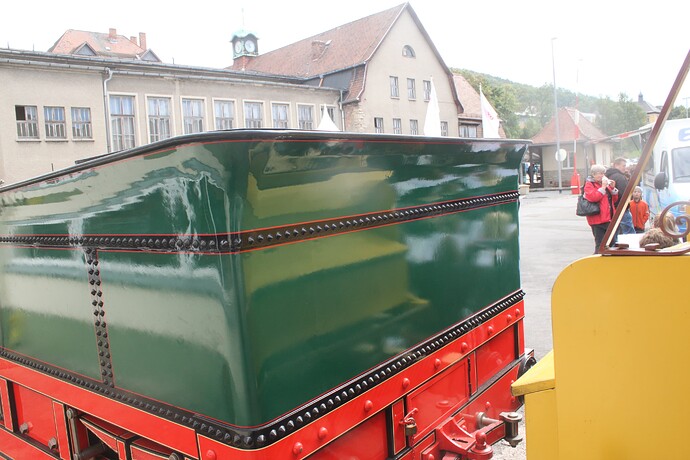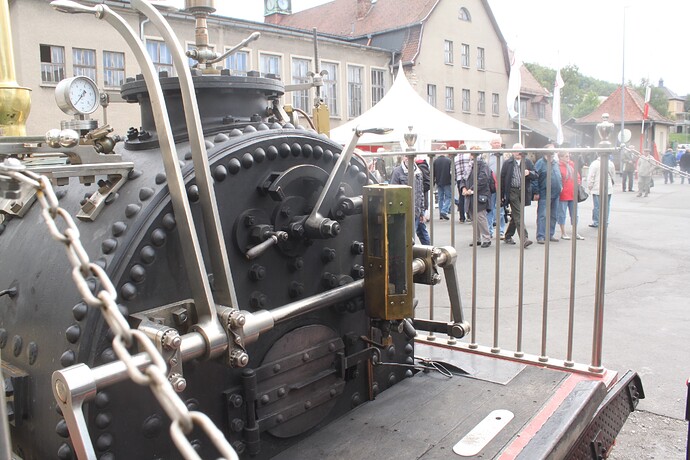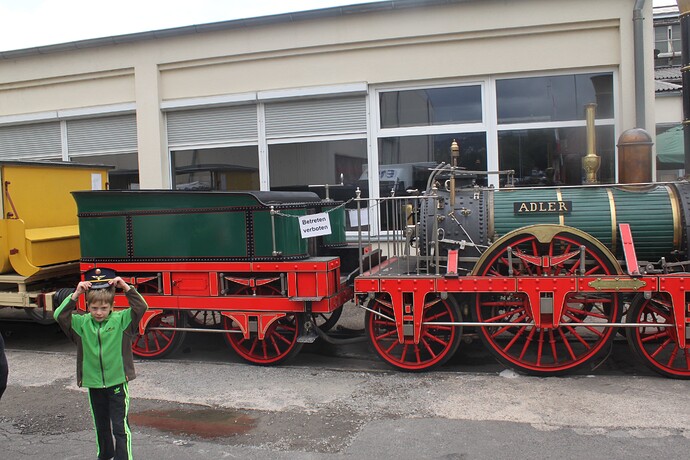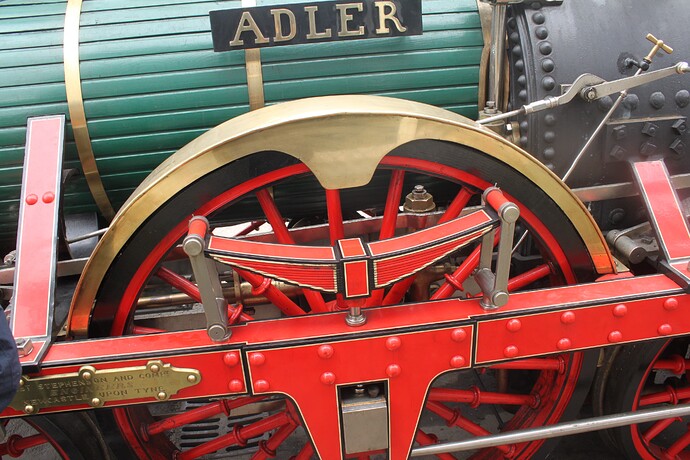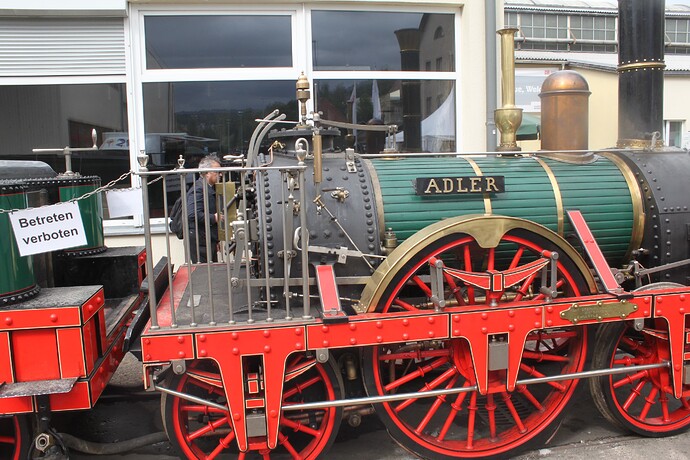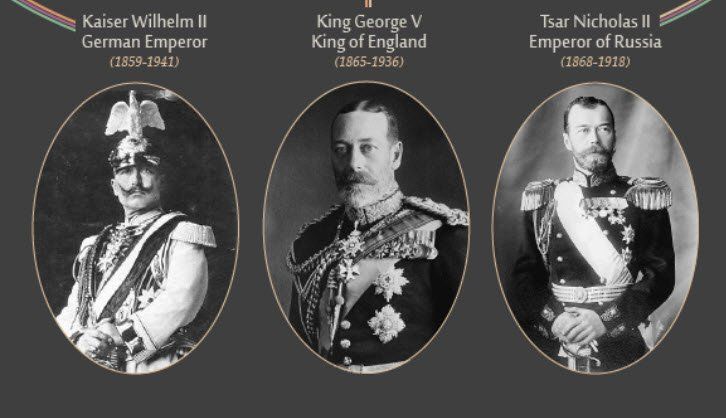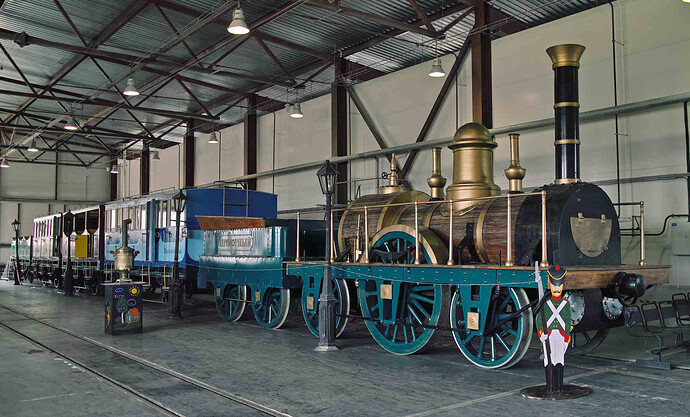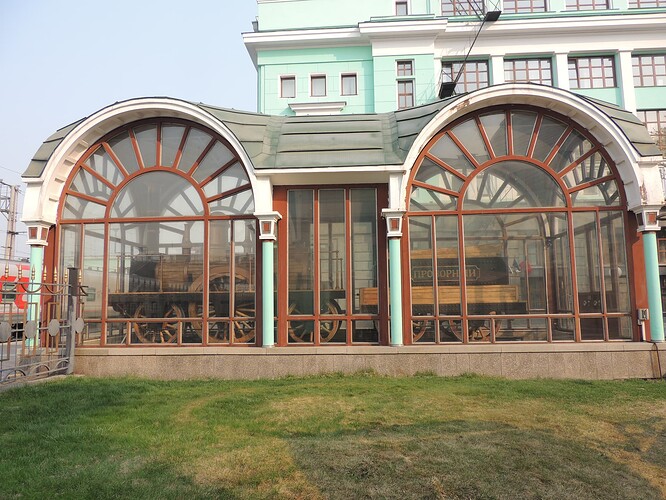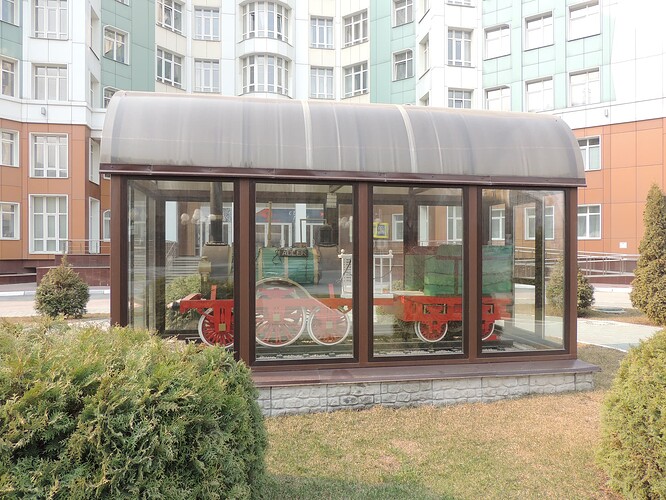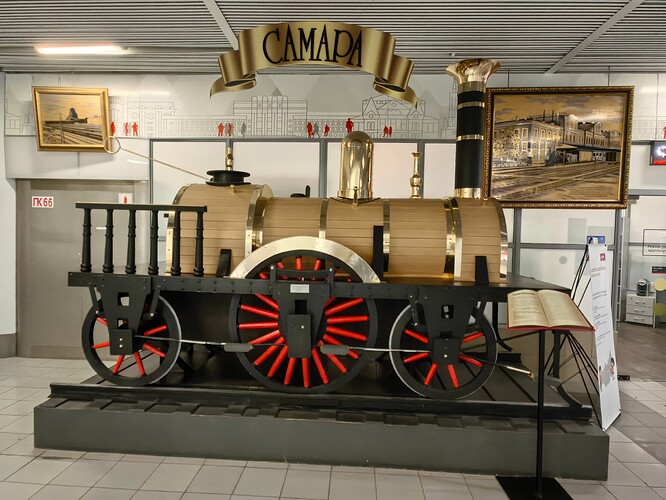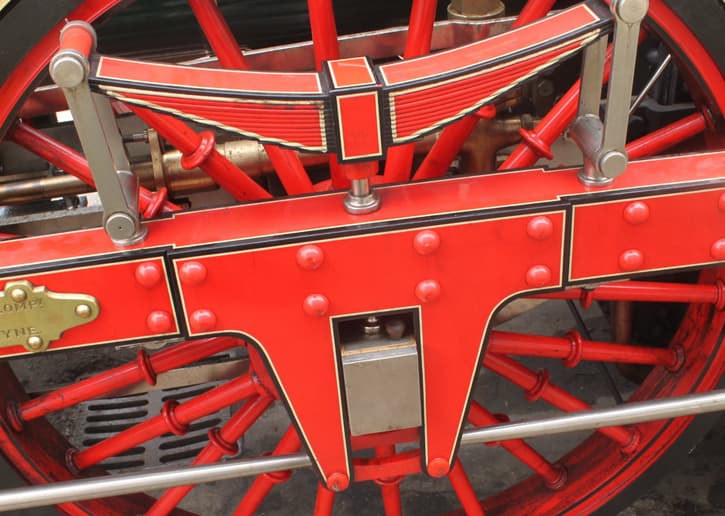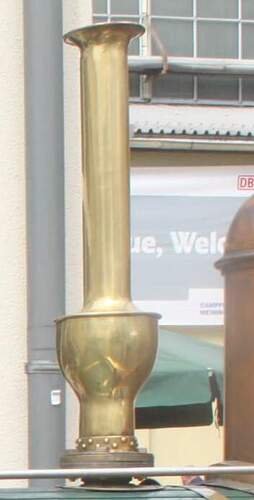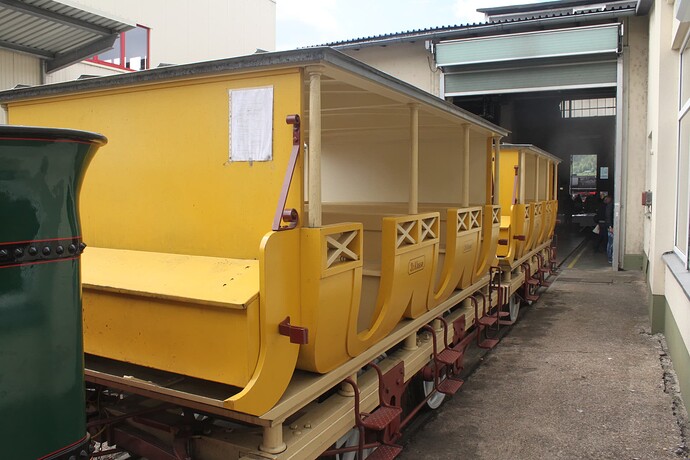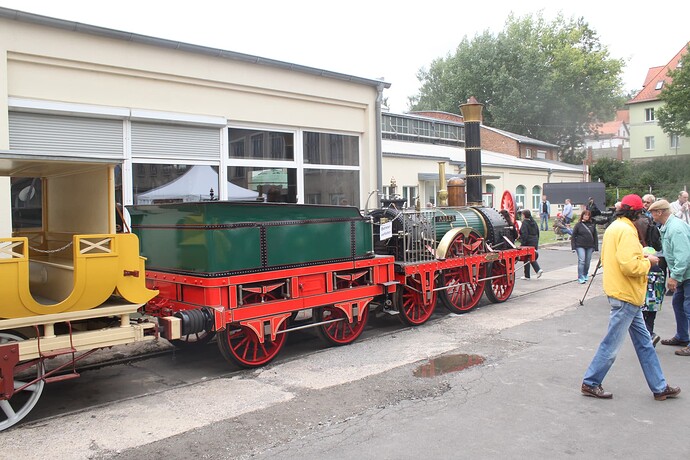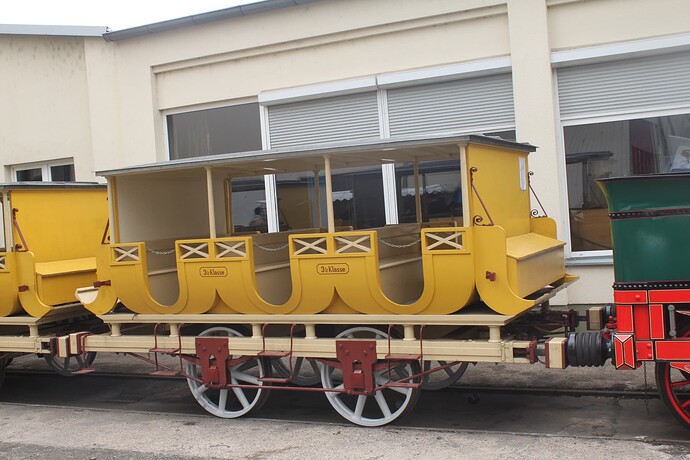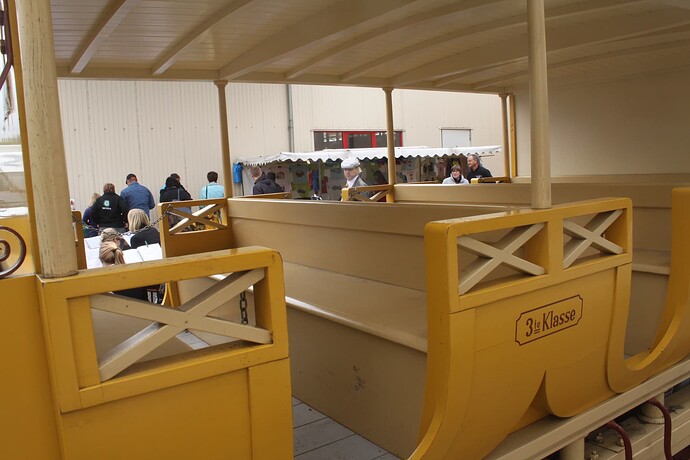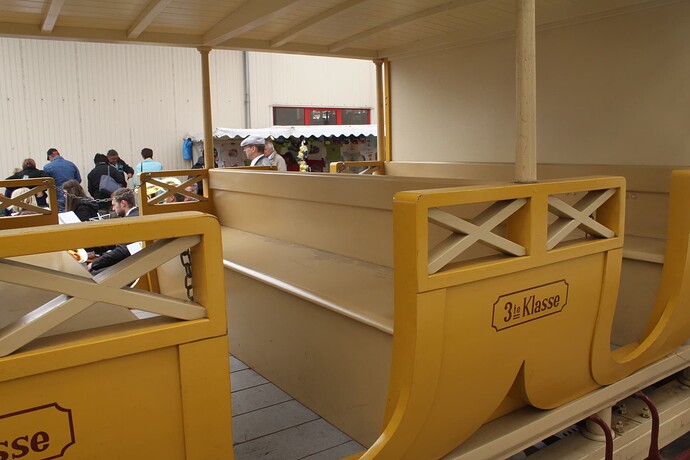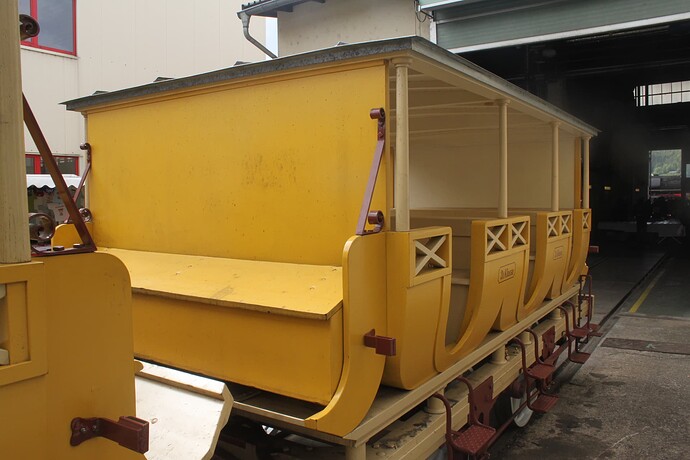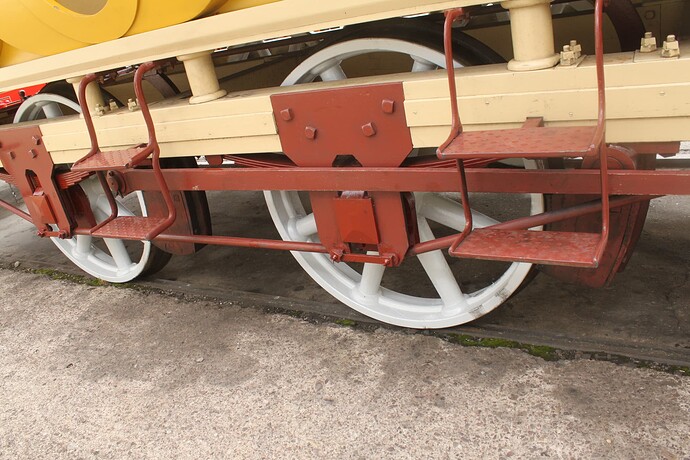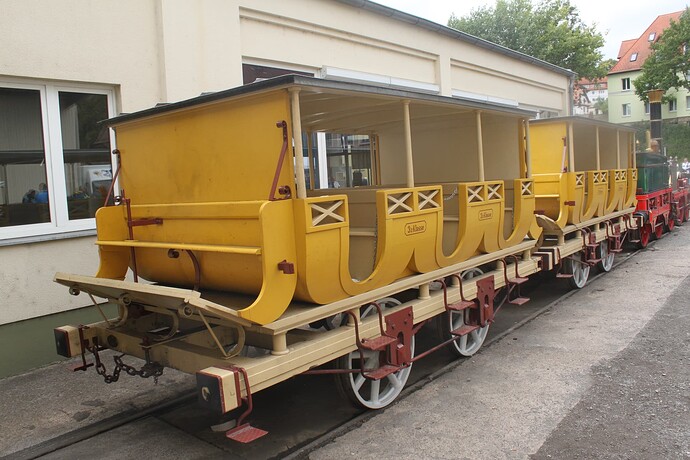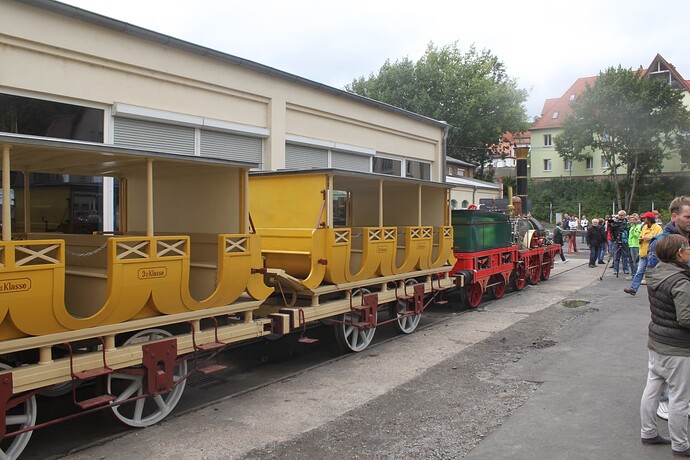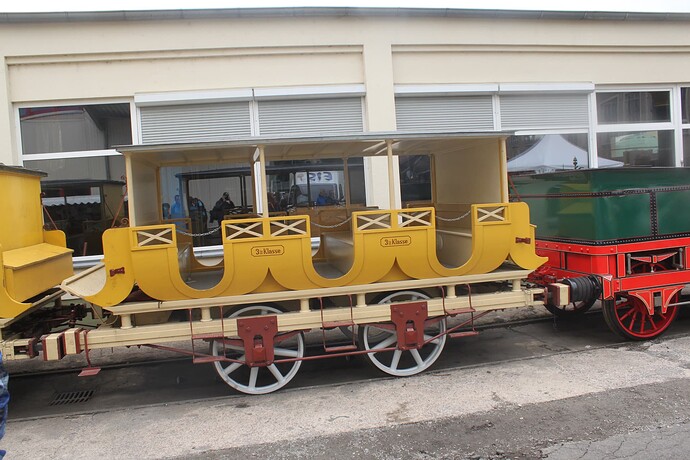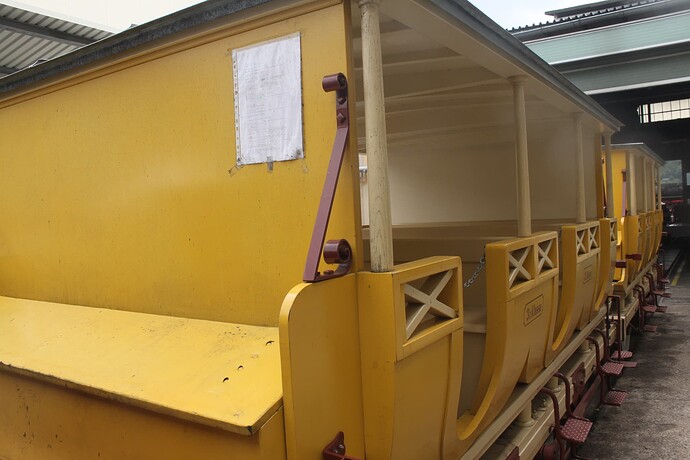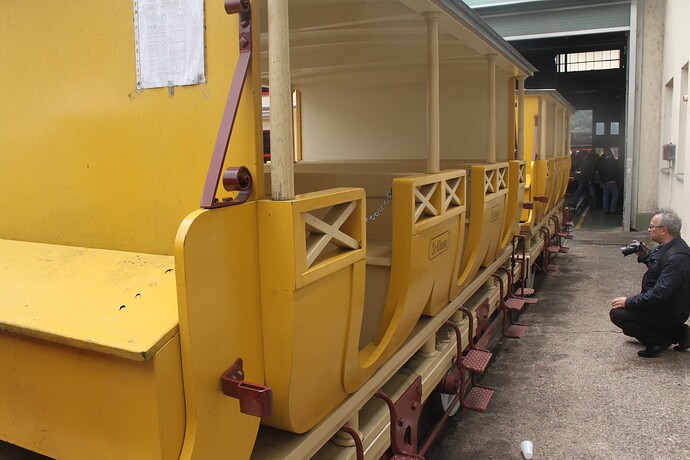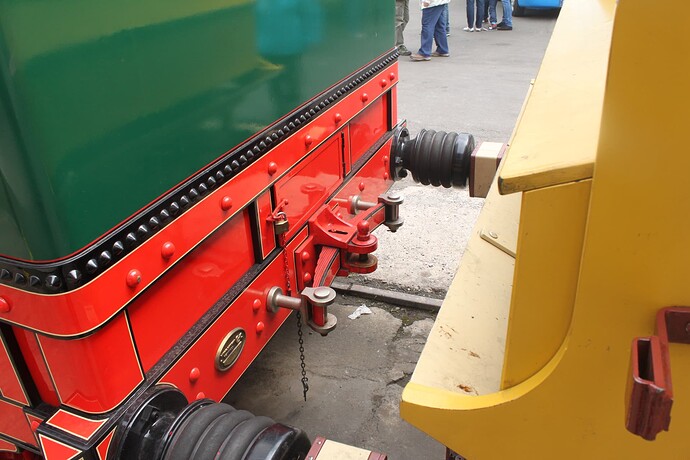This is a replica of the first steam engine in Germany from 1835. Next to engine is the ICE 3 bullet train
It turns out that the first passenger steam locomotives in England, Germany and Russia are related! Just like their rulers.
Our steam locomotives were called “Provorny” and “Strela”. Their full-size models are located:
in the city of Pushkin (formerly Tsarskoye Selo), where their activity began.
in the city of Novosibirsk (formerly Novo-Nikolaevsk) at the railway station and
in the railway museum.
Not far away is a slightly smaller copy of the steam locomotive “Adler”
A simplified model in the museum at the railway station in the city of Samara (formerly Kuibyshev).
But there are no running copies. ![]()
They probably all came from England? Strela means Arrow, just like the second engine in Germany, named “Pfeil”. What does “Provorny” mean?
There are two copies of the Adler, one in running condition and one static. And they also brought the engineer for the machine from England, a guy called Mr. Wilson.
Fun Fact. The first cargo in Germany were two barrels of beer. ![]()
What beauties! (The lokos, not the sovereigns.) Now I wanna build models of them.
That metalsmithry of the time - all the brass. Yet, it looks like the steam dome is copper (my favorite of the three main metals). And the silver rods and levers - polished, or nickle-plated?
What is that hookah-looking thing between the dome and boiler? The pop-off valve is just ahead of the engineer on the firebox.
Fast, quickly, speedy, rapid et.c
Thanks!
There are were Adler Züge in HO gauge.
https://www.maerklin.de/de/produkte/min-details/article/26351?cHash=ec31f635e9b551f29192bbfe4b161ad7
Me too. One of the characteristics of continental and British steam. (Lining as the Brits call it.) I bought several decals sheets of various combinations years ago to apply to my freelance locos, and my Kitmaster models. Hoping our ever-delayed renovation will finish soon so I can start being a modeler and model RRer again.
Robin, bingo! That’s it.
I am guessing that it could be an overpressure relief valve.
This contraption could be an adjustable relief valve,
wingnut for adjustment but not really a handle or lever for
daily operation, the brass cylinder could be hiding a spring, use
wingnut to adjust the pre-load of the spring.
Low pre-load → valve opens at a lower pressure, high pre-load → valve opens later.
The “hookah” could then be the final, non adjustable, security relief valve.
Maybe it is simply a blow-out plate at the top of the “bulb” beneath the
“chimney” part. Once it blows you have to explain to the chief engineer
why the F it happened and then the workshops replace the broken plate/seal.
Easily operated handle/wheel = something to adjust while driving
Hard to reach or difficult to use = adjusted in the workshop or while not driving
Hidden inside something = only for workshop or manufacturer
I presume those are first class cars,
second or third would be without roof …
Edited after Hermanns reply:
Third was roofless
Second had a canvas cover
First had solid roof and windows.
Full description in German (copy to Google translate or use the link and get the whole page translated)
" Die Wagen der dritten Wagenklasse besaßen ursprünglich kein Dach, drei Abteile mit acht bis zehn Sitzplätzen, die Einstiege hatten keine Türen. Die Wagen der zweiten Wagenklasse waren demgegenüber mit einem Segeltuchdach ausgestattet und hatten Türen, vor den unverglasten Fenstern waren Vorhänge aus Seide, später aus Leder angebracht. Bei gleicher Breite der Wagen war die Anzahl der Sitzplätze bei den teureren Klassen pro Reihe jeweils um einen reduziert. Die Wagen der ersten Wagenklasse waren mit einem kostbaren blauen Tuch ausgeschlagen, mit Fensterscheiben aus Glas versehen, die Türgriffe waren vergoldet und alle Beschläge aus Messing gefertigt. Der heute noch erhaltene Wagen Nr. 8 der 2. Wagenklasse ist im Verkehrsmuseum Nürnberg ausgestellt."
Nope, all third class. Very comfortable for 1835.
Roofs added later.
Comfort, as so many other things, is highly relative.
Having simply wooden seats is a huge comfort improvement compared to standing in an open cargo waggon…
There are ready-made kits on scale in 1/24 scale from the Spanish OcCre.
Thanks Yuri.
